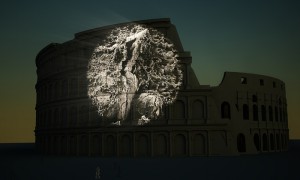OK, so they are not actually gigantic bacteria. But this is just really a great idea: The Colosseum becomes a living artwork — powered by its own bacteria | Art and design | The Guardian Now the arena — or rather, the bacteria within it — is becoming a living artwork for the first time, over …
For those folks who spend most of our time looking at code, charts and graphs, it’s always fun to look at what folks are doing with imaging and microscopy. Advances in sequencing technology have changed the way we think about the microbial world, but the way we see the microbial world is also changing as …
So – we are hoping to hire an artist to do some contract work for “Gut Check” the microbiome game. And we need some help and advice. We would like the game and all the art associated it to be released under as broad an open license as possible. But we would also like to …
Well, I have always told people that we need more mixing of art and science. In recent years we have seen lots of attempts to do some sort of art inspired by – or even incorporating – microbes. But this is perhaps the other side of the coin. Art is significantly influenced by microbes in …
I just love this. Saw a post on twitter from Glyn Moody Mouldering city built of bread is a metaphor for Earth without humans – bit.ly/19vEkjT striking – Glyn Moody (@glynmoody) June 1, 2013 So I followed the lead to this: Mouldering city built of bread is a metaphor for Earth without humans – Boing Boing. …
The Febrile Muse is today’s microBEnet microbiology blog of the day. The blog focuses on the “Portrayal of Infectious Diseases in Literature and the Arts” according to the tagline. The author, who is not named, describes herself as “passionate about science literacy and wishes to inspire people to read and write and learn.” More about the author …
For those interested in microbes and art, here is an article for you: Mold attack on frescoes and stone walls of Gradac monastery The PDF of the article is available here. Basically they looked at biofilms and molds on stone frescoes because of the possibility that they may lead to deterioration of the frescoes.
Next in my ongoing series of posts related to beneficial microbes in the built environment… using Pseudomonas to restore 17th century Italian frescoes. Apparently these particular frescoes were improperly restored in the 1960’s using some kind of gelatin glue that now causes salt crystals to grow on the art. Both chemical and mechanical removal methods …
Though much of the work on microbiology of the built environment focuses on health in some way, there are other reasons to be interested in “Who are the microbes in your neighborhood.” One of them is discussed in this paper: Trends in Microbiology : Scripta manent? Assessing microbial risk to paper heritage. Microbes in the …
